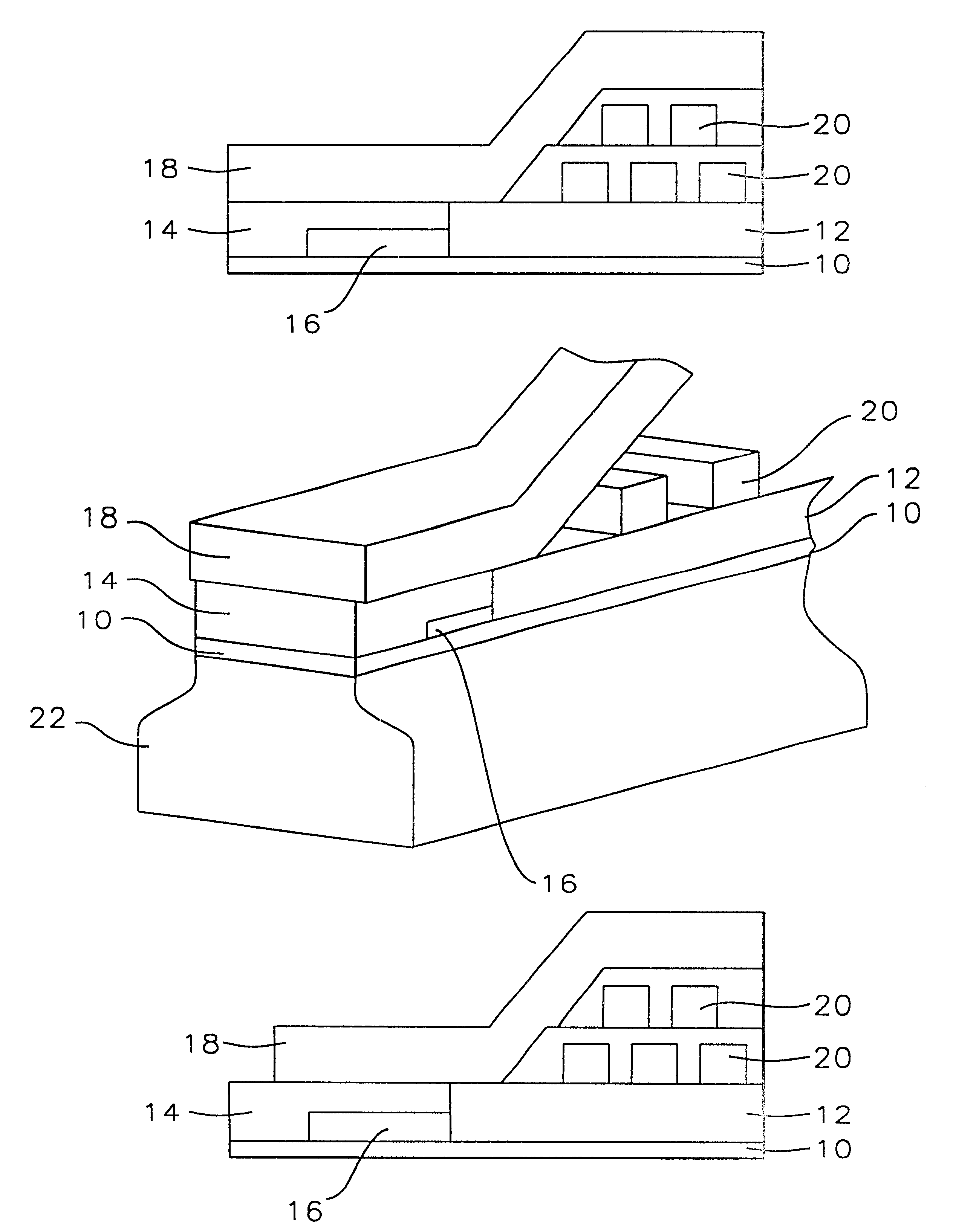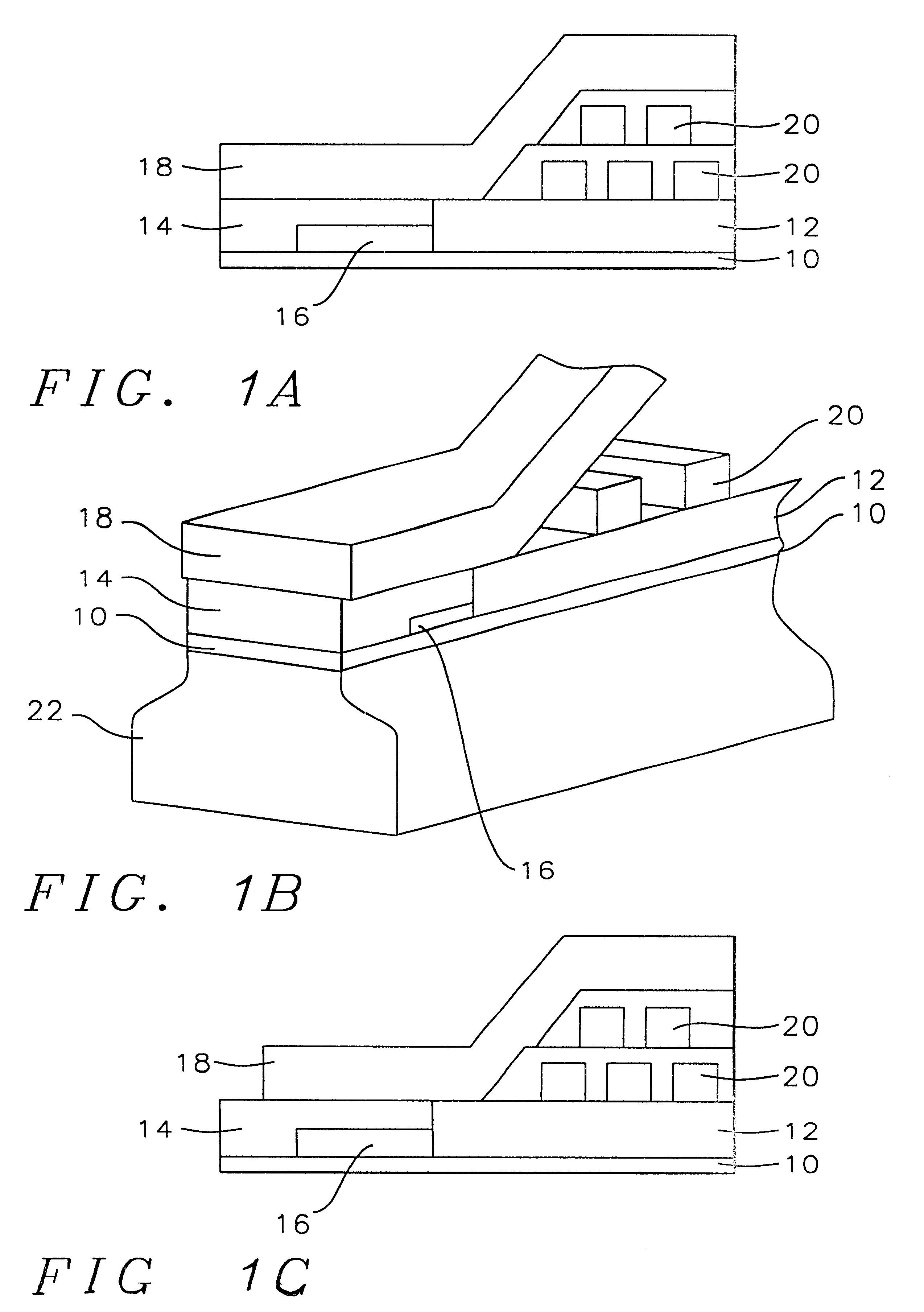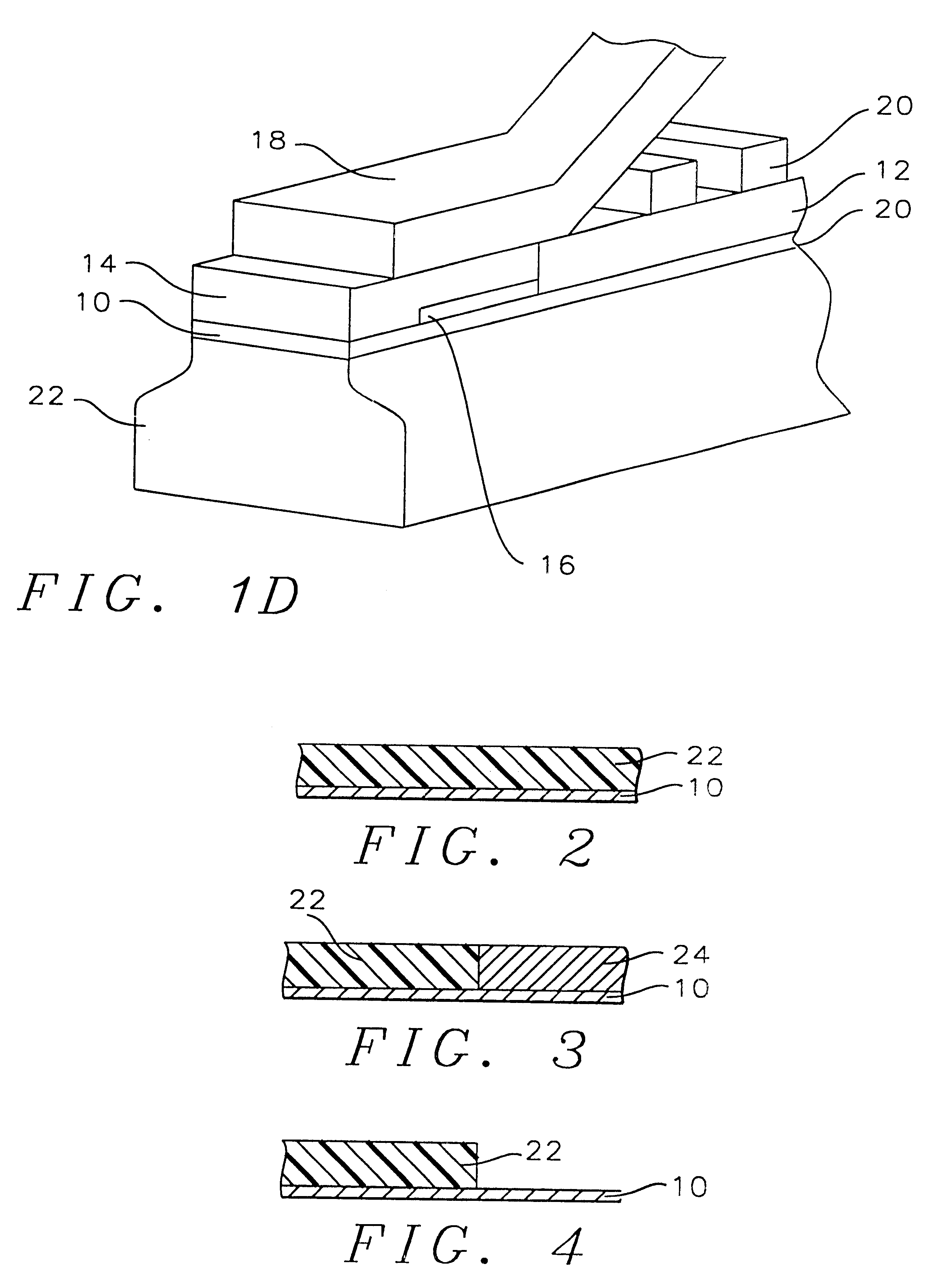Method to make a stitched writer for a giant magneto-resistive head
- Summary
- Abstract
- Description
- Claims
- Application Information
AI Technical Summary
Benefits of technology
Problems solved by technology
Method used
Image
Examples
Embodiment Construction
The present invention is a high data-rate stitched pole magnetic write head and a method for fabricating it. This head can be formed as part of a giant magneto-resistive read / write head structure.
A description of the preferred embodiments of this invention will be given in the context of the schematic drawings designated FIG. 1A, FIG. 1B, FIG. 1C, FIG. 1D, FIG. 2, FIG. 3, FIG. 4, FIG. 5, FIG. 6, FIG. 7, FIG. 8 and FIG. 9.
Referring now to FIG. 1A, we see a schematic cross-sectional view of a completed stitched pole magnetic write head fabricated according to a first preferred embodiment of the present invention. In this embodiment, the upper pole yoke portion, P3 (18), has been stitched to the upper pole piece, P2 (14), so that they are not recessed relative to each other (i.e. (18) and (14) are co-planar at the air-bearing surface). The non-magnetic spacer layer (16) is shown and P3, P2 and the spacer layer configuration have been deposited on the write gap layer (10). The induction...
PUM
| Property | Measurement | Unit |
|---|---|---|
| Length | aaaaa | aaaaa |
| Length | aaaaa | aaaaa |
| Length | aaaaa | aaaaa |
Abstract
Description
Claims
Application Information
 Login to View More
Login to View More - R&D
- Intellectual Property
- Life Sciences
- Materials
- Tech Scout
- Unparalleled Data Quality
- Higher Quality Content
- 60% Fewer Hallucinations
Browse by: Latest US Patents, China's latest patents, Technical Efficacy Thesaurus, Application Domain, Technology Topic, Popular Technical Reports.
© 2025 PatSnap. All rights reserved.Legal|Privacy policy|Modern Slavery Act Transparency Statement|Sitemap|About US| Contact US: help@patsnap.com



